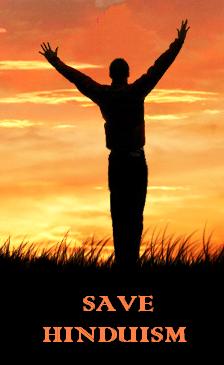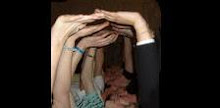
The Oldest Known Symbol
The swastika is an ancient symbol that has been used for over 3,000 years. (That even predates the ancient Egyptian symbol, the Ankh!) Artifacts such as pottery and coins from ancient Troy show that the swastika was a commonly used symbol as far back as 1000 BCE.
The swastika is an ancient symbol that has been used for over 3,000 years. (That even predates the ancient Egyptian symbol, the Ankh!) Artifacts such as pottery and coins from ancient Troy show that the swastika was a commonly used symbol as far back as 1000 BCE.
During the following thousand years, the image of the swastika was used by many cultures around the world, including in China , Japan , India , and southern Europe . By the Middle Ages, the swastika was a well known, if not commonly used, symbol but was called by many different names:
· China - wan
· England - fylfot
· Germany - Hakenkreuz
· Greece - tetraskelion and gammadion
· India - swastika
· China - wan
· England - fylfot
· Germany - Hakenkreuz
· Greece - tetraskelion and gammadion
· India - swastika
History
Traditionally, when the swastika is drawn facing right handed or clockwise as above, it is a good luck symbol. It is sometimes claimed when it is drawn left facing or anti-clockwise, it is a bad omen and it is labelled a "sauwastika", however there is little evidence of this distinction in Hindu and Buddhist history from which it is supposed to derive. This symbolism has been modified because of associations with Nazism. Hindus all over India still use the symbol in both representations for the sake of balance, although the standard form is the left-facing swastika; Buddhists almost always use the left facing swastika.
Meaning of Holy Swastika
Main Vertical line......................Devi Parvati
Main Horizontal line..................Lord Shiva
Centre of the cross.....................Lord Ganesha
Upper horizontal extension......Lord Brahma
Lower vertical extension...........Devi Saraswati
Lower ho rizontal extension......Lord Vishnu
Upper vertical extension...........Devi Mahalakshmi
The symbol also represents the four petals of the Mooladhara Chakra as per the Tantric scriptures.Right handed Swastika is used in all the Hindu rituals like opening new account books, marriage, Mundan ceremony and other religious rituals.None in whole of the three cosmos can handle Shakti once awakened except Lord Shiva in the Ugra rupa.-Mamsadayini TantraThe left-handed or feminine Swastika is rarely used and is considered inauspicious. Tantrics following the Vamamarga (left handed path or sexually oriented Tantra) ise this feminine Swastika to invoke Goddess Kali for getting the best results of the Chakra-puja.Each line of this Swastika is also has great relevance and has the feminine energies.LINES.............................................GODS/GODDESS
Main Vertical line.....................Devi Chinnamasta
Main Horizontal line.................Devi Kakalmalini
Centre of the cross....................Devi KaliUpper
horizontal extension.................Devi Sodasi
Lower vertical extension...........Devi Matangi
Lower horizontal extension......Devi Astibakshi
Upper vertical extension............Devi Mamsapriya
Thus a person who is not able and perfect cannot awaken the Shakti and unless the individual is pure he would not be able to handle the Shakti's thus invoked.This is the reason why Hitler failed miserably as he was an unstable person with high ambition and title understanding of occult sciences.
Geometry
Geometrically, the Nazi swastika can be regarded as the area inside of an irregular icosagon or 20-sided polygon. The proportions of were fixed based on a 5x5 diagonal grid.Characteristic is the 90° rotational symmetry (that is, the symmetry of the cyclic groupC4h) and chirality, hence the absence of reflectional symmetry, and the existence of two versions of swastikas that are each other's mirror image. The mirror-image forms are often described as:
clockwise and counterclockwise;
left-facing and right-facing;
left-hand and right-hand.
Geometry
Geometrically, the Nazi swastika can be regarded as the area inside of an irregular icosagon or 20-sided polygon. The proportions of were fixed based on a 5x5 diagonal grid.Characteristic is the 90° rotational symmetry (that is, the symmetry of the cyclic groupC4h) and chirality, hence the absence of reflectional symmetry, and the existence of two versions of swastikas that are each other's mirror image. The mirror-image forms are often described as:
clockwise and counterclockwise;
left-facing and right-facing;
left-hand and right-hand.

"Left-facing" and "right-facing" are used mostly consistently. In an upright swastika, the upper arm faces either the viewer's left (卍) or right (卐). The other two descriptions are ambiguous as it is unclear whether they refer to the direction of the bend in each arm or to the implied rotation of the symbol. If the latter, whether the arms lead or trail remains unclear. However, "clockwise" usually refers to the "right-facing" swastika. The terms are used inconsistently (sometimes even by the same writer), which is confusing and may obfuscate an important point, that the rotation of the swastika may have symbolic relevance, although little is known about this symbolic relevance.



very good to know about your knowledge depth..
ReplyDeleteis any way possible to connect with you..
my email id is south@southbangalore.com